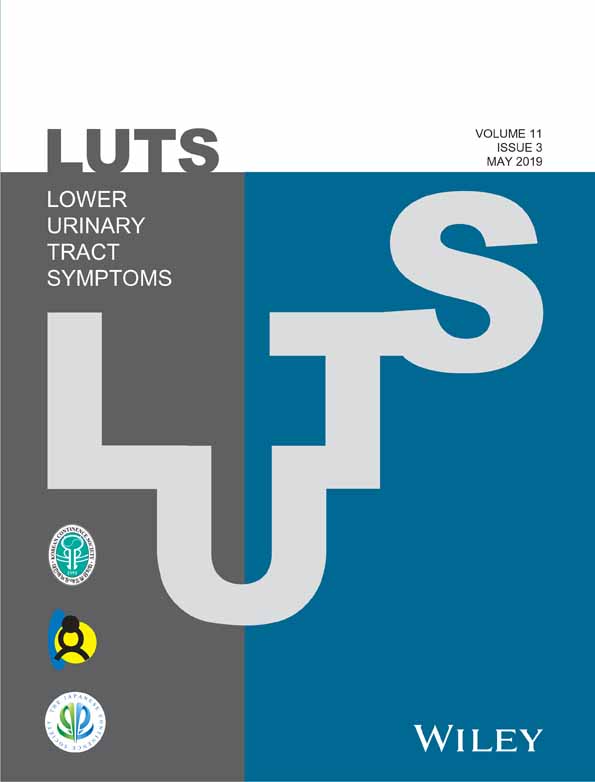Effectiveness and persistence of mirabegron as a first-line treatment in patients with overactive bladder in real-life practice
Abstract
Objectives
To evaluate the effectiveness and persistence of mirabegron as a first-line treatment in patients with overactive bladder (OAB) in real-life practice.
Methods
We retrospectively analyzed patients with OAB who received mirabegron (50 mg) as a first-line treatment. According to treatment course, patients were divided into three groups, (a) mirabegron only (monotherapy group), (b) mirabegron and anticholinergics (add-on group), and (c) mirabegron replaced with another treatment (switch group). The patients' symptoms were documented with a voiding diary including an urgency scale and a patient perception of treatment benefit questionnaire (PPTB). Follow-up was at 4 weeks after initial treatment and then 2 months later, according to our routine protocol.
Results
A total of 196 patients were included: 128 patients (65.3%) received monotherapy and 60 patients (30.6%) received add-on therapy. Eight patients discontinued mirabegron and switched to another treatment modality. The add-on group had more episodes of baseline urinary frequency, nocturia and urgency than the monotherapy group (P = 0.011, 0.001, and 0.006, respectively). In the monotherapy group, mean daily frequency, nocturia, urgency episodes, and urgency urinary incontinence were improved (P < 0.05) after mirabegron treatment. The persistence of mirabegron monotherapy was 68.0% at 3 months, 54.4% at 6 months, and 39.4% at 12 months. Treatment-naïve patients had better persistency than previously anticholinergics-treated patients.
Conclusions
Mirabegron is an effective first-line therapy for OAB, but has a persistence rate of 39.4% at 12 months. Patients with severe baseline OAB symptoms tended to require add-on therapy during follow-up.




